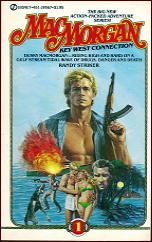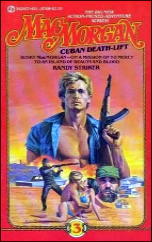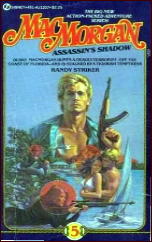Sat 8 Nov 2014
Reviewed by David Vineyard: CHARLES WILLIAMS – Shadows of Ecstasy.
Posted by Steve under Reviews[11] Comments
CHARLES WILLIAMS – Shadows of Ecstasy. Victor Gollancz, UK, hardcover, 1933. Pelligrini & Cudahy, US, hardcover, 1950. Reprinted several times in both hardcover and paperback. Available online at Project Gutenberg Australia.
There once was a small gathering of friends, sometimes two, sometimes three, at a public house in Oxford. The three men called themselves The Inklings because they were all writers. Two of them were Oxford dons at one of the colleges that compose that ancient institution: a Catholic scholar in ancient tongues and elder sagas who would pen one of the great children’s books of the 20th Century and go on to create a literary phenomena, a trilogy that would become one of the cultural icons of the 1960’s and remain one of the world’s most read and loved volumes.
The other don was no less successful; his conversion to Christianity would make him one of the most famous Christian apologists of his era, and he would pen a trilogy of science fiction novels that helped, along with writers like Kingsley Amis and Aldous Huxley, to drag that genre kicking and screaming out of the pulps into the literary light. His tragic late marriage would become one of the great love stories and inspire one of the key works on grief, and a series of children’s allegorical tales about a place called Narnia would become among the best loved stories in the world.
Those names you know well, J. R. R. Tolkien and C. S. Lewis, yet the third member is not so well known today despite the fact that at that time he was far and away the most famous member of that group: poet, playwright, lecturer, radio personality, leading Christian apologist, and bestselling novelist, Charles Williams.
Williams was the brightest star of the Inklings. He and Tolkien quietly clashed and were held together by Lewis. Tolkien, a Catholic did not agree with Williams’ Anglican views of faith, and probably resented his hold on Lewis, himself a late convert to the Church of England. Nor was Williams a particularly donnish or quiet sort. To the contrary it is difficult to imagine him in that sedate literary trio.
No one reads Williams’ poetry much today and his plays go unproduced, but his novels are kept in print, and while not as famous or widely read as those of his fellow Inklings, they have not suffered complete obscurity. But they lack the timeless setting of Lewis’s Perelandra and Narnia and of Tolkien’s Middle Earth. Instead they are allegorical thrillers, a sometimes confusing mix of those two great friends P. G. Wodehouse and Sax Rohmer (they were clerks at the same bank in Egypt and remained life long friends and literary supporters) though his writing style is closer to the Huxley of the thirties or early Durrell.
Christian thrillers are in vogue today, but don’t confuse them with Williams. These poorly written examples of bad pulp, intolerance, and simple-minded theology are no kin to Williams witty, deep novels of soaring imagination, vision, and ageless questions.
The best of his works is All Hallows Eve, a novel about two people suspended between life and death in shadowy ghost of London unseen by the living around them. Here though we are concerned with one of the thrillers, Shadows Of Ecstasy, which spins a threat that would daunt James Bond, and a villain —- well, is he a villain? — you’ll have to decide for yourself: is he the Antichrist as vicar Ian Caithness holds, a hypnotic power mad genius as agnostic Sir Bernard Travers suspects (Travers and Caithness are best friends — the vicar can’t stand other people’s dogma and Travers has none), or is poet Roger Ingram right, is Nigel Considine’s blinding star to be followed at whatever cost?
Three main plot-lines tie these people and events together: in London a wealthy Jewish collector of rare gems has committed suicide shortly after a visit from Considine and left his collection, including the holy Jewels of Messia, to two relatives who plan to transport part of the collection to the temple in Jerusalem where it belongs; in Africa there are uprisings and unrest, the colonial forces are in retreat, and someone calling himself the High Executive proclaims the day of the European way is ended and a great force is rising from the past to conquer the world with love, but not without bloodshed and the threat of invasion from the great black masses,†the great age of intellect is done.â€
Meanwhile Roger, Travers, and Caithness have befriended a young black man, Inkamasi, they saved from an ugly English mob only to find he is the charming and well educated traditional king of the Zulu nation, descendent of Shaka, and exiled like the hero of Haggard’s King Solomon’s Mines. He is also key to Nigel Considine’s plans, a king must die.
And in London the black people are rising, the secret army of the High Executive, “ Daughters and Sons of Africa, you are called to the everlasting sacrifice.†Soon bombs fall from above, or so the populace believes, and the streets are filled with angry mobs attacking innocent blacks, Jews, and Indians. Williams is no racist; even if his views are dated, there are few demeaning stereotypes. Far and away his greatest wrath is aimed at the English mobs destroying their own city, unknowingly doing the High Executive’s bidding, he isn’t too keen on the government either.
Is Considine the High Executive? When Travers finds a family photo of Considine taken with his grandfather by Travers as a child in 1883 he realizes Considine would have to be over a hundred years old, and Inkamasi knows him from earliest childhood as the Deathless One.
Rounding out the cast are the male and female ingenues: Travers’ son Philip, a soldier on leave, and his fiance Rosamund, a beautiful and rather shallow young woman whom Travers has little use for, and who has the thankless job of representing the prejudice and blindness of the average upper middle class Englishwoman or man; two of Considine’s disciples. the Devotees: Nielson, the German who is ready to die and rise again, the final step in achieving the highest order of immortality, and Mottreaux, the Frenchman and Considine’s right hand man.
Finally there is Roger’s wife Isobel, beautiful, wise, loving, and far and away the sanest person in the book. Even in Considine’s opinion, she is Roger’s anchor to sanity as the world spins into madness, and if you are wondering just who the hero of this book is, the character closest to truth let me point out again Roger is a poet with a rather sardonic tongue, just like the author: “I think you dare encounter darkness.” Considine tells him.
Granted this is complex and confusing, and Williams, while highly literate and capable of spinning lyrical sentences and witty rapport is not an easy writer, especially for readers used to today’s choppy one-sentence paragraphs. Williams never saw a complex sentence or long paragraph he didn’t like and the book seems longer than it actually is because you have to think while you read.
Don’t be fooled though, this is compelling page-turning reading, your imagination and intellect kept reeling and your faith or lack of it challenged. This isn’t Narnia, though I suspect Williams’ The Place of the Lion inspired Lewis Aslan.
I used a key word earlier in relation to Considine, “disciples,” because it soon becomes clear what the allegory is here, and Williams never clearly establishes if Considine reaches too far or fails because of hubris, but the point of the allegory is made pretty clearly when Considine fails to raise Nielson from the dead and is struck down by the bullet of a greedy traitor, who covets the Jewels of Messia, at his moment of triumph:
Who is Considine, a secular second savior, a super criminal worthy of and far more nuanced than Fu Manchu, the Antichrist, or something of all three? At several points Milton and Paradise Lost are invoked but no one quite makes the connection. In the end there are no easy answers, and this thriller bears on its shoulders a greater weight than mere conspiracy and world conquests. Roger and the reader are left wondering, pondering.


